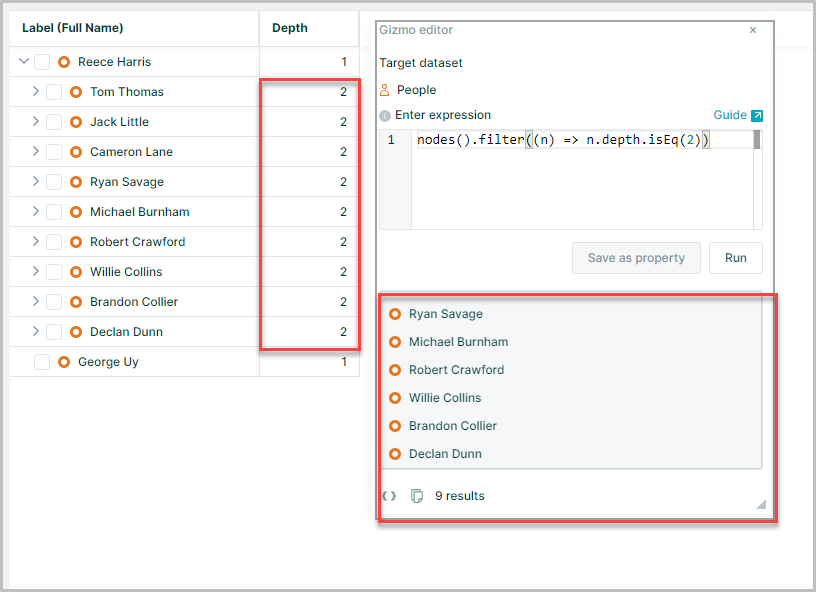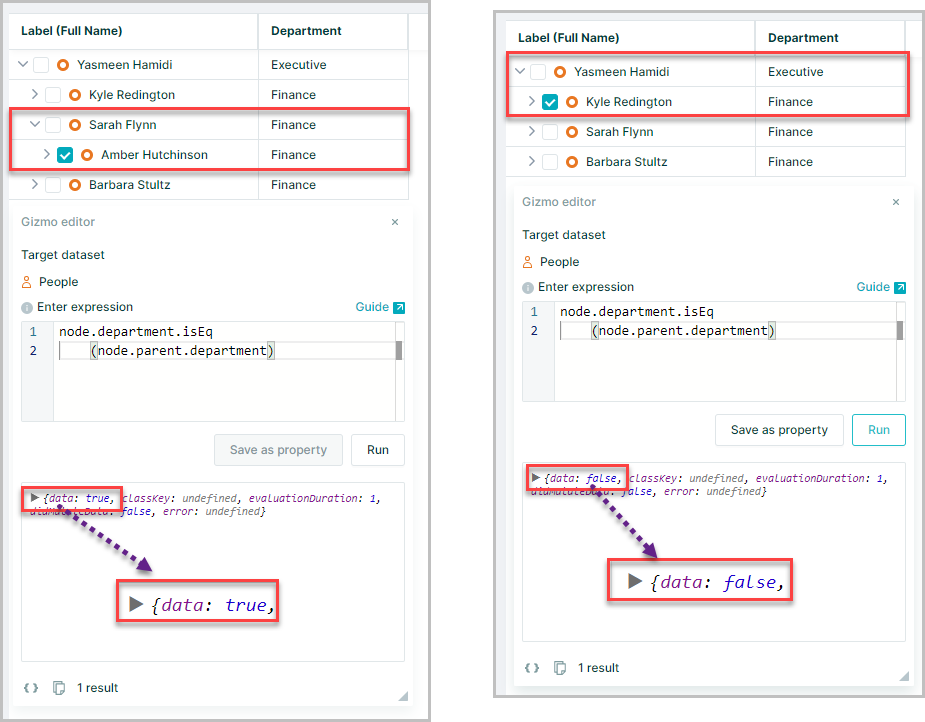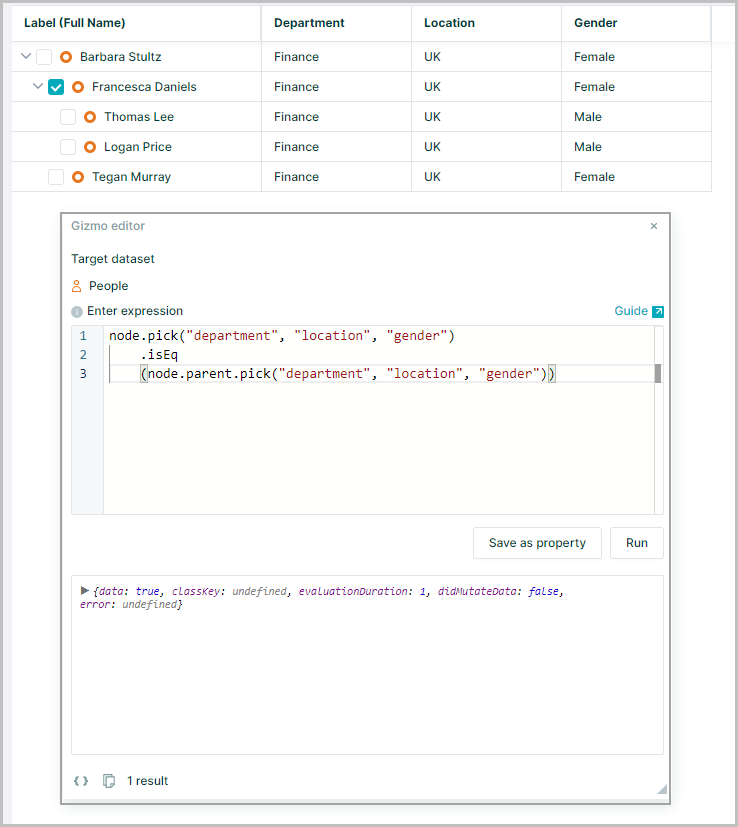Is Equal
Testing for equality in JavaScript (the language in which Gizmo is implemented) can be challenging as JavaScript casts the values on performing ==
Casting means that data types may be changed as a result of the expression within the Gizmo editor
Whilst the cast can be avoided by using ===, testing equality between Objects directly is not possible
And testing for null and undefined (ie (Blank) values) can have unintended outcomes
The isEq() function allows testing for equality which avoids these surprises
Is a node equal to a value
An example would be to show all nodes at a specific depth in the organisation
nodes().filter((n) => n.depth.isEq(2))

Is a node equal to another in hierarchy
In this example the test is to check if the employee is in the same department as their manager
node.department.isEq(node.parent.department)
Which returns the result true or false

Does a node share multiple values with another
The isEq() function can be used alongside .pick() to test equality across multiple properties
The expression node.pick("propertykey1", "propertykey2", propertykey3") will get the values held for chosen properties for selected node
while node.parent.pick("propertykey1", "propertykey2", propertykey3") does the same for the parent of the selected node
Combining both of these elements with isEq can test equality across one or more property
node.pick("department", "location", "gender")
.isEq(node.parent.pick("department", "location", "gender"))
In this example the test is to see if the employee is the same department and location and gender as their manager

For more advanced conditional clauses, see is.